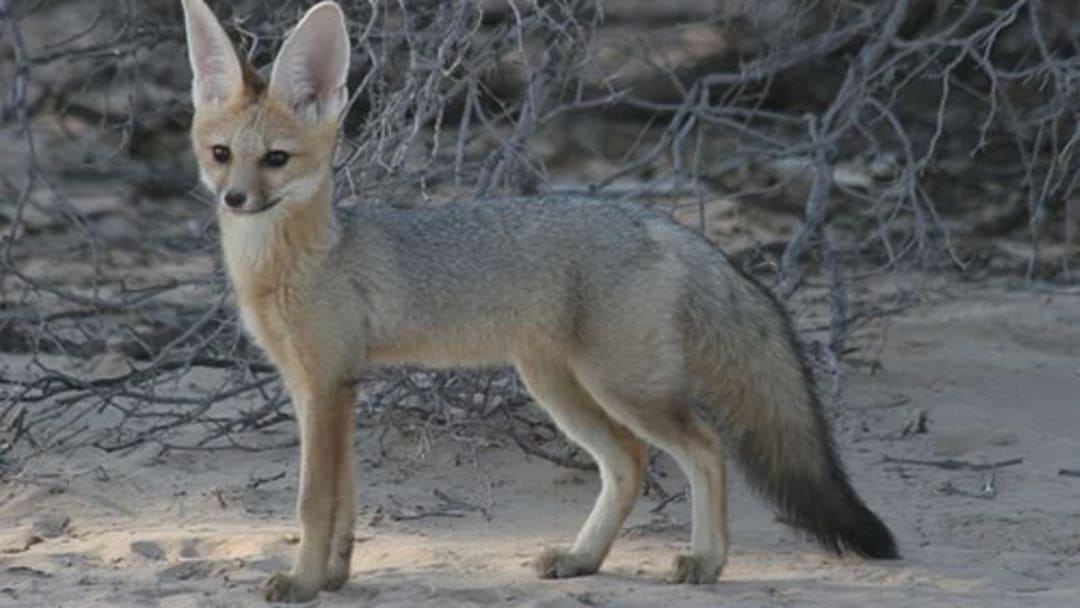The Pale Fox, a desert nomad with a sandy coat and a knack for teamwork, thrives in the harsh African deserts with remarkable adaptations and cooperative social life.
Imagine vast, sun-baked landscapes stretching towards the horizon – this is the domain of the Pale Fox (Vulpes pallida). These desert dwellers are not just survivors; they are masters of their arid environment, thriving with a unique combination of adaptations and social behaviors. Let’s embark on a journey into the world of the Pale Fox, exploring their desert adaptations, remarkable social lives, and the clever strategies they use to survive in one of the harshest environments on Earth.
Built for the Burning Sands: Desert Adaptations
The Pale Fox is a living testament to how creatures can adapt to extreme conditions. Here’s how they excel in the scorching deserts:
- Camouflaged for Survival: Their fur, a pale shade of sand, blends seamlessly with the desert landscape, providing excellent camouflage from predators. This desert camouflage makes them difficult to spot against the backdrop of dunes and dry vegetation.
- Desert Nomads: Pale foxes are not tied to one specific location. They roam across vast desert expanses, following seasonal changes in food and water availability. This nomadic lifestyle allows them to maximize their chances of finding resources in the unpredictable desert environment.
- Masters of the Night: The scorching desert sun poses a significant challenge. To avoid the daytime heat, pale foxes are primarily nocturnal. They emerge under the cloak of darkness when temperatures are cooler to hunt and explore their surroundings.
Living on the Edge: Resourceful Hunters and Eaters
Survival in the desert requires a flexible approach to food. Pale foxes are resourceful omnivores, meaning they have a varied diet that includes:
- Insects: These abundant prey items are a vital source of protein and moisture.
- Small Mammals: Pale foxes are skilled hunters, capable of catching rodents and other small desert animals.
- Plant Material: In times of scarcity, they might even consume fruits, leaves, or other plant matter to supplement their diet.
This adaptability allows them to exploit whatever food sources are available in the ever-changing desert environment.
Strength in Numbers: The Social Lives of Pale Foxes
Unlike many solitary fox species, pale foxes exhibit a fascinating social structure. They live in cooperative groups, typically consisting of:
- Family Units: A breeding pair and their offspring form the core of these social groups.
- Cooperative Benefits: Working together offers several advantages. Parents can share the responsibility of raising young, and multiple individuals searching for food can increase the group’s overall success.
Communication is Key:
Maintaining a strong social bond is crucial for pale foxes. They communicate with each other using a variety of methods, including:
- Vocalizations: They use barks, yelps, and other sounds to convey information about danger, food sources, and social interactions.
- Body Language: Tail posture, ear position, and facial expressions all play a role in communication within the group.
Through this complex communication system, pale foxes maintain a cohesive social unit, enhancing their chances of survival in the unforgiving desert landscape.
As we continue our exploration of the captivating world of foxes, the Pale Fox stands as a testament to the power of adaptation and cooperation. In the harshest environments on Earth, nature has crafted remarkable creatures like the Pale Fox, showcasing their resilience, resourcefulness, and social skills.
Pale Fox FAQs: Unveiling the Secrets of the Desert Nomad
Where do Pale Foxes live?
Pale foxes are perfectly adapted to desert life and can be found across various desert ecosystems in Africa, from the vast Sahara Desert to the Kalahari Desert. These arid environments present challenges like scarce water and extreme temperatures, but pale foxes have developed remarkable adaptations to thrive in these harsh conditions.
What do Pale Foxes eat?
Pale foxes are resourceful omnivores, meaning they have a flexible diet that allows them to adapt to the limited food availability in the desert. Their meals can include insects, small mammals like rodents, and even some plant material like fruits or leaves.
How do Pale Foxes survive the desert heat?
Pale foxes have several adaptations to cope with the scorching desert sun:
– Nocturnal Activity: They are primarily nocturnal, meaning they are most active at night when temperatures are cooler.
– Desert Camouflage: Their pale fur blends in perfectly with the desert landscape, making them difficult for predators to spot during the day when they might seek shelter in burrows or under shady vegetation.
Are Pale Foxes social animals?
Unlike many fox species, pale foxes are quite social. They live in cooperative groups typically consisting of a breeding pair and their offspring. Working together helps them raise young, find food more efficiently, and stay alert for potential threats.
How do Pale Foxes communicate with each other?
Pale foxes rely on a combination of vocalizations and body language to communicate within their social groups. Vocalizations like barks and yelps can warn of danger or signal the location of food sources. Body language cues like tail position and facial expressions also play a role in social interactions.


